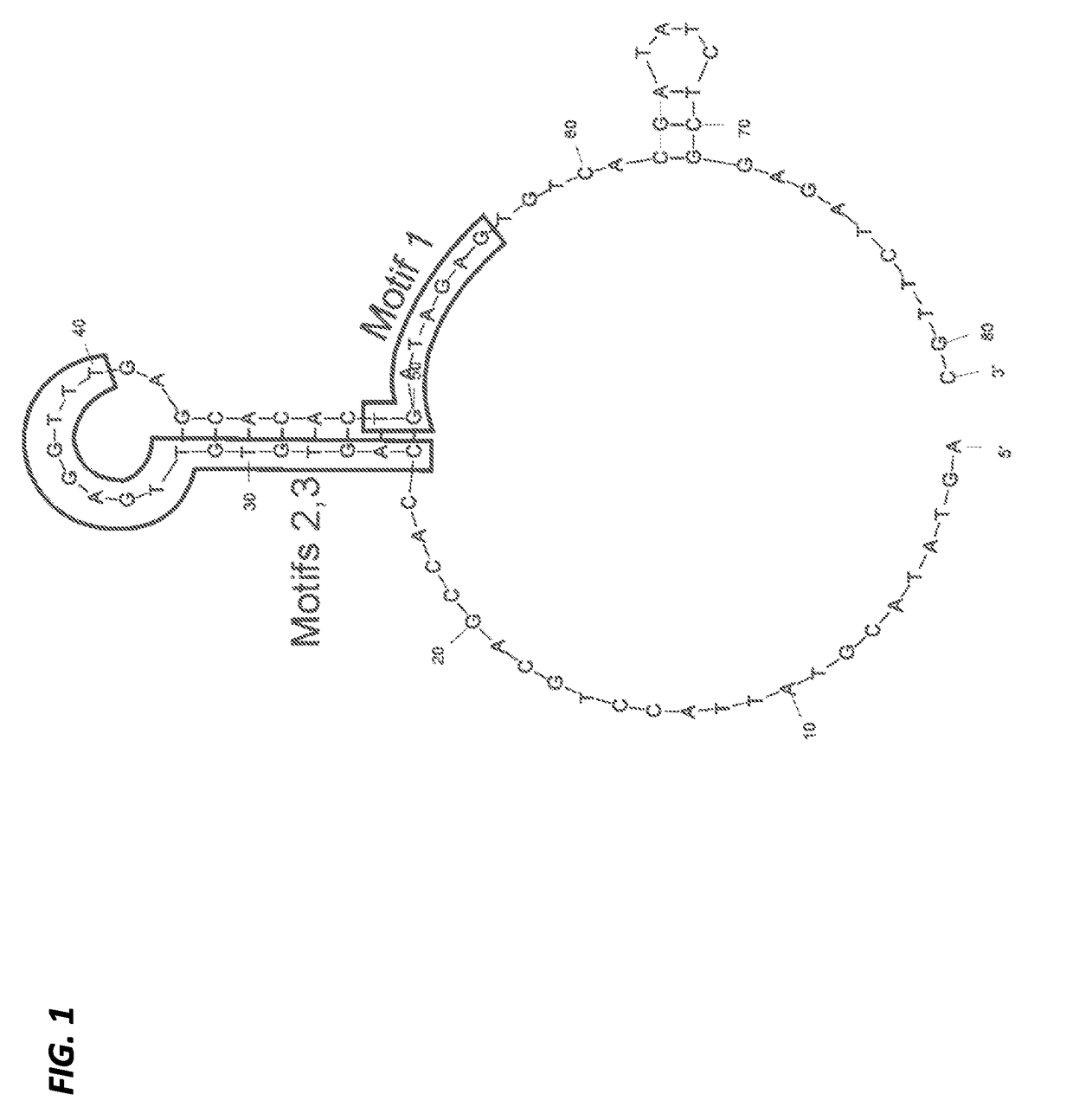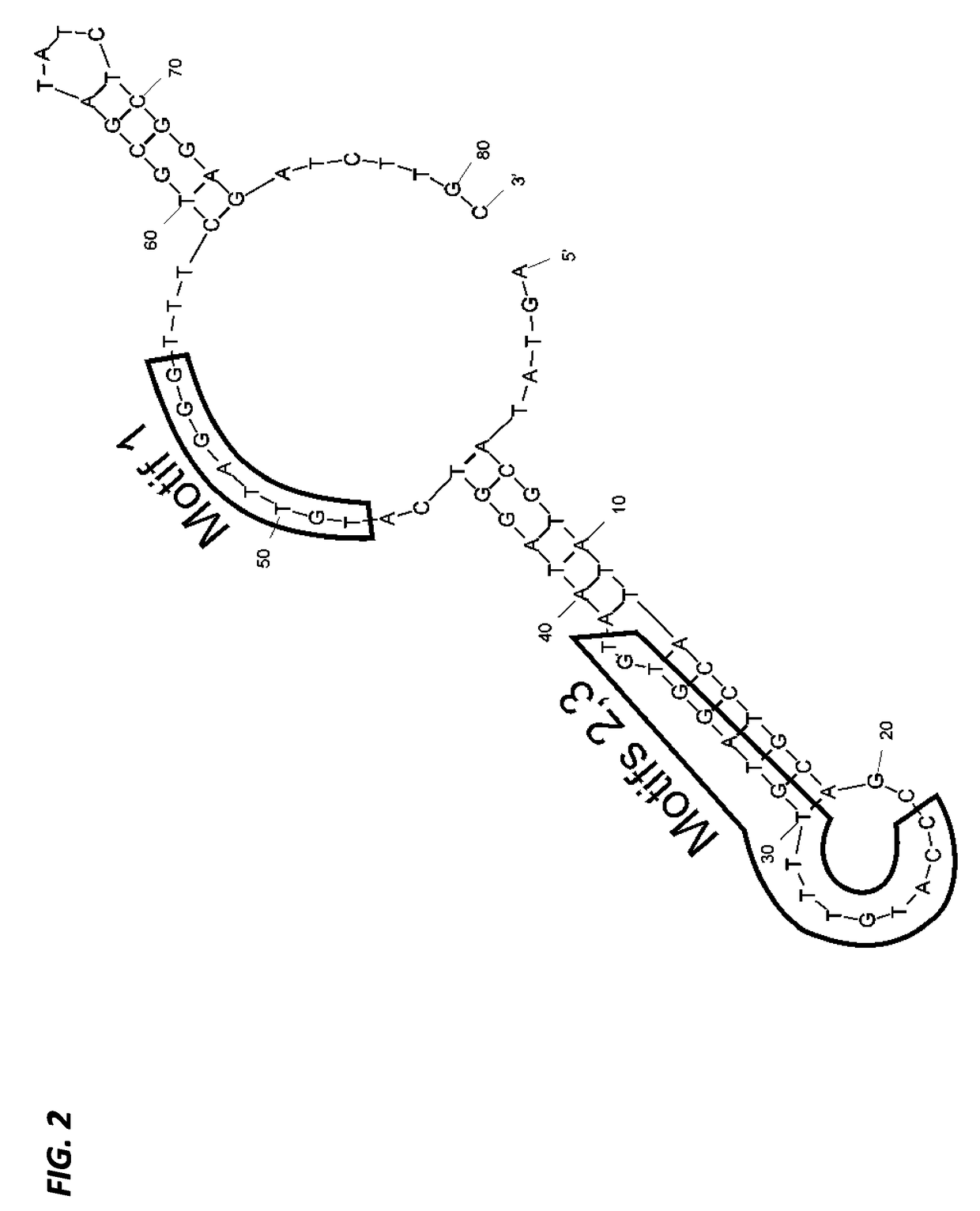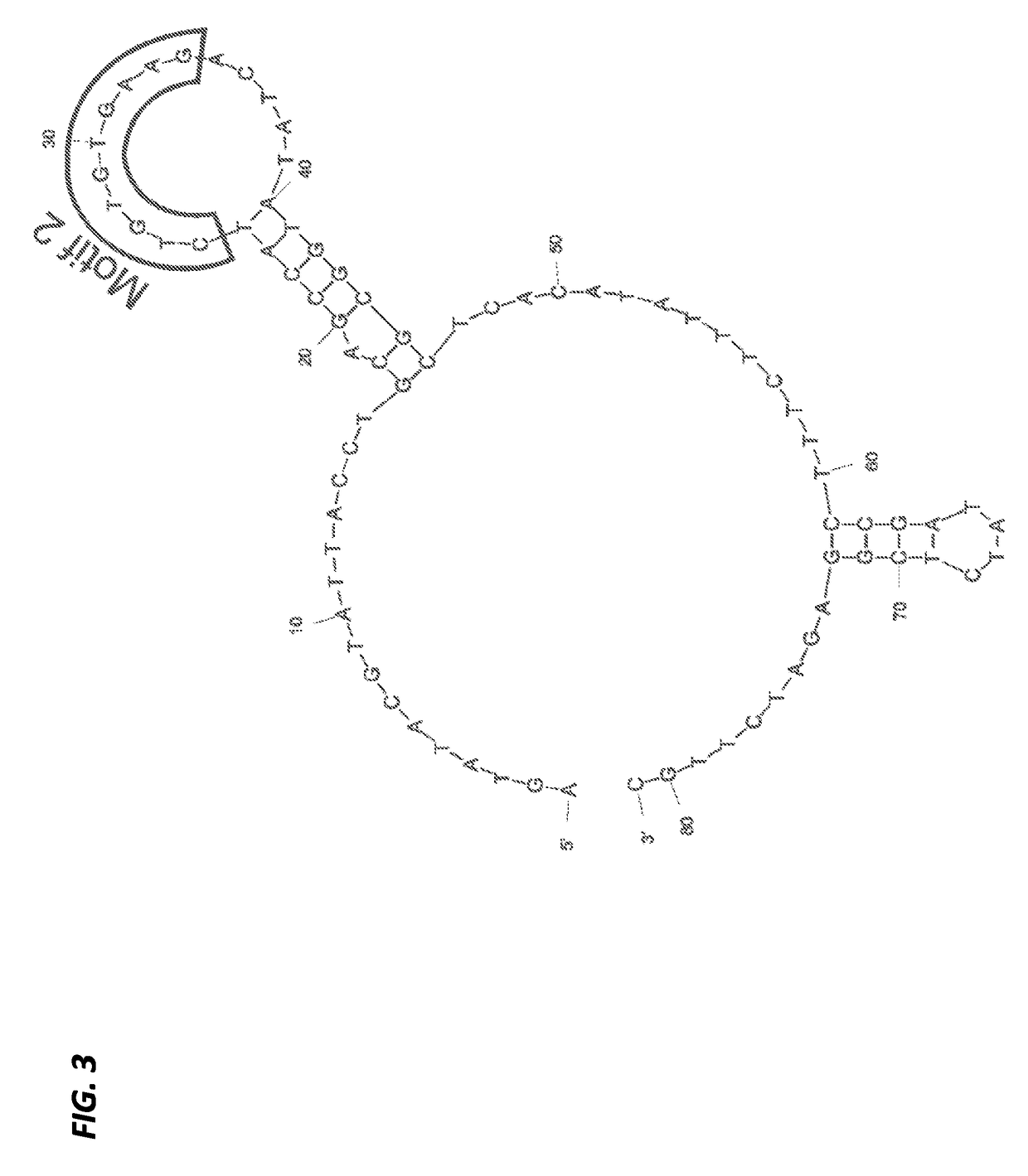Aptamers with binding affinity to norovirus
a technology of aptamers and noroviruses, applied in biochemistry apparatus and processes, instruments, material analysis, etc., can solve the problems of no cell culture model to propagate noroviruses, no cell culture model to prevent norovirus infection, and outbreaks in closed settings. , to achieve the effect of preventing or reducing norovirus infection and reducing norovirus infection
- Summary
- Abstract
- Description
- Claims
- Application Information
AI Technical Summary
Benefits of technology
Problems solved by technology
Method used
Image
Examples
example 1
Selection, Characterization and Application of Nucleic Acid Aptamers for the Capture and Detection of Human Norovirus Strains
Materials and Methods
Viruses and Virus-Like Particles (VLPs)
[0178]Viruses. Snow Mountain virus (SMV), the prototype genogroup II, genotype 2 (GII.2) human norovirus (HuNoV) and the target for aptamer selection, and Norwalk (NV), the prototype genogroup I, genotypel HuNoV, were obtained as stool specimens originating from a human challenge study. Pre-challenge stool samples confirmed (by RT-qPCR) as negative for HuNoV were used for counter selection and as negative controls in some studies. Additional fecal specimens associated with previously confirmed HuNoV outbreaks (representing strains GI.6, GII.1, GII.3, GII.4, GII.7 and an untypable GII) were also used in detection assays. All stool samples were suspended 20% in phosphate buffered saline (PBS). In some cases, these suspensions were used without further purification, designated as crude suspensions. In ot...
example 2
Capture and Detection of Norovirus by Target Specific Nucleic Acid Aptamers
Materials and Methods
[0206]Norovirus-Specific ssDNA Aptamers
[0207]The 81-mer ssDNA aptamer candidates (designated SMV-17 and SMV-22 (S-9)), previously selected against SMV (genogroup II.2 human NoV strain) using a whole-virus SELEX approach were used in this study. These were selected from a larger aptamer candidate pool because of their apparent high binding affinities (Kd) and low free energies (dG) (Suh et al., Capture and Detection of a Representative Human Norovirus Strain using Target-Specific Nucleic Acid Aptamers: Proof of Concept, IAFP, Charlotte, N.C. (2013)), as previously evaluated using an Enzyme-linked Aptamer Sorbent assay (ELASA) (Bruno et al., J. Biomol. Tech. 22:27-36 (2011)) and the on-line software DNA Mfold version 3.2 (found at the website located at mfold.bioinfospi.edu / cgi-bin / dna-form1.cgi) (Zuker, Nucleic Acids Res. 31:3406-3415 (2003)), respectively.
Prototype Assay Development
[0208]...
example 3
Generation and Characterization of Nucleic Acid Aptamers Targeting the Capsid P Domain of a Human Norovirus GII.4 Strain
[0219]Human noroviruses (NoV) are the most common cause of acute viral gastroenteritis worldwide (Glass et al., N. Engl. J. Med. 361:1776-1785 (2009)) and the leading cause of foodborne illness in the United States (Scallan et al., Emerg. Infect. Dis. 17:7-15 (2011)). Despite their public health significance, the availability of routine detection methods for these viruses is limited, in part due to the absence of an in vitro cultivation method. While molecular amplification (specifically reverse transcriptase quantitative PCR or RT-qPCR) is usually used for NoV detection by the public health sector, it is not commonly used in clinical diagnostics. Perhaps because of sample complexity (fecal matrix), ligand-based detection methods are more appealing for clinical diagnostics.
[0220]Unfortunately, human NoV are genetically and antigenically diverse, complicating the id...
PUM
| Property | Measurement | Unit |
|---|---|---|
| Fraction | aaaaa | aaaaa |
| Magnetism | aaaaa | aaaaa |
| Strain point | aaaaa | aaaaa |
Abstract
Description
Claims
Application Information
 Login to View More
Login to View More - R&D
- Intellectual Property
- Life Sciences
- Materials
- Tech Scout
- Unparalleled Data Quality
- Higher Quality Content
- 60% Fewer Hallucinations
Browse by: Latest US Patents, China's latest patents, Technical Efficacy Thesaurus, Application Domain, Technology Topic, Popular Technical Reports.
© 2025 PatSnap. All rights reserved.Legal|Privacy policy|Modern Slavery Act Transparency Statement|Sitemap|About US| Contact US: help@patsnap.com



